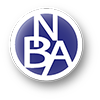Dash and hyphen
Home › Forums › Unified English Braille Literary › Dash and hyphen
- This topic has 5 replies, 2 voices, and was last updated 5 years, 3 months ago by
Tung.
-
AuthorPosts
-
September 9, 2020 at 6:43 pm #35995
Tung
ParticipantGood morning Dan,
My proofreader and I disagreed on the use of dash and hyphen in the following situations: (1) connecting numbers such as 198-200 (2) R-AZ for Republican Arizona (The print text use dash in both cases). I transcribed them both as hyphen and my proofreader said they should be dash. I read some of Julie responses and think that even in new UEB we don't have to follow print in this case. After all, we use hyphen NOT dash in the page numbers on the title page of every transcription.
Thank you very much
Tung
September 10, 2020 at 8:06 pm #36000Dan Gergen
ParticipantHello Tung,The UEB Literary Committee discussed your question and we find it difficult to settle the disagreement without seeing the print copy. The only UEB reference that applies is in §7.1.1 —follow print in transcribing punctuation.However, we agree that the normal print convention for connecting numbers such as 198 and 200 or abbreviations such as R and AZ, is to use hyphens—not dashes. If these are actually dashes by comparison to any recognized hyphens in the print text, then your proofreader is correct in insisting they are dashes—but I think most writers generally use dashes to produce an abrupt pause that draws a dramatic halt to the rhythm and flow of a sentence, not to connect numbers or abbreviations. I don't believe the dashes are what the writer intended.As a transcriber, you often need to make judgment calls based on what is the impact on the braille reader. The committee suggests you base your decision on the surrounding information in the print text and we agree that the normal convention is to use hyphens to connect numbers such as 198-200 or other related text items such as R-AZ, Dashes on the hand divide text items. and may appear distracting to the reader, such as in your example, 198—200 or R—AZ.If you could send a screenshot of the print page, we would be very interested in seeing it.Thank you for posting your question in the UEB Literary forum. We are always willing to answer any questions you have.Dan GergenCommittee Chair-
This reply was modified 5 years, 3 months ago by
Dan Gergen.
-
This reply was modified 5 years, 3 months ago by
Dan Gergen.
September 11, 2020 at 8:08 pm #36010Tung
ParticipantHello Dan,
Thank you very much. Here are a few examples.
Tung
Attachments:
You must be logged in to view attached files.September 11, 2020 at 8:24 pm #36014Tung
ParticipantHello Dan,
I have some more examples in this file for hyphen and dash proplems.
Tung
Attachments:
You must be logged in to view attached files.September 12, 2020 at 5:35 pm #36023Dan Gergen
ParticipantHello Tung,
Thank you for sharing the print with us. We have discussed this at length and believe that you and your proofreader are both correct.
Your interpretation that they should be hyphens based on context is warranted, and many of us would transcribe it that way. A proofreader’s job is to note and correct any deviation from print.
We think we can all agree from the print that those are very obviously dashes. Whether stylistic dashes, because hyphens would look weird, or just because that’s what the publisher wanted isn’t our decision to make. It is a deviation from print.
In cases like this, where both parties are correct, we think the end-user or commissioning agency should make the decision. We encounter this often in braille, even with very seasoned transcribers and proofreaders; we can’t all agree, all the time.
While both parties are correct to the letter of the code, this is an interpretation issue, not a braille rules issue.
Thanks again, and good luck.
UEB Literary Committee
September 13, 2020 at 4:26 pm #36041Tung
ParticipantGood morning, Dan
Thank you very much.
Tung
-
This reply was modified 5 years, 3 months ago by
-
AuthorPosts
Everyone is free to read the forums, but only current NBA members can post. Become a member today. Click here to Login and return.
